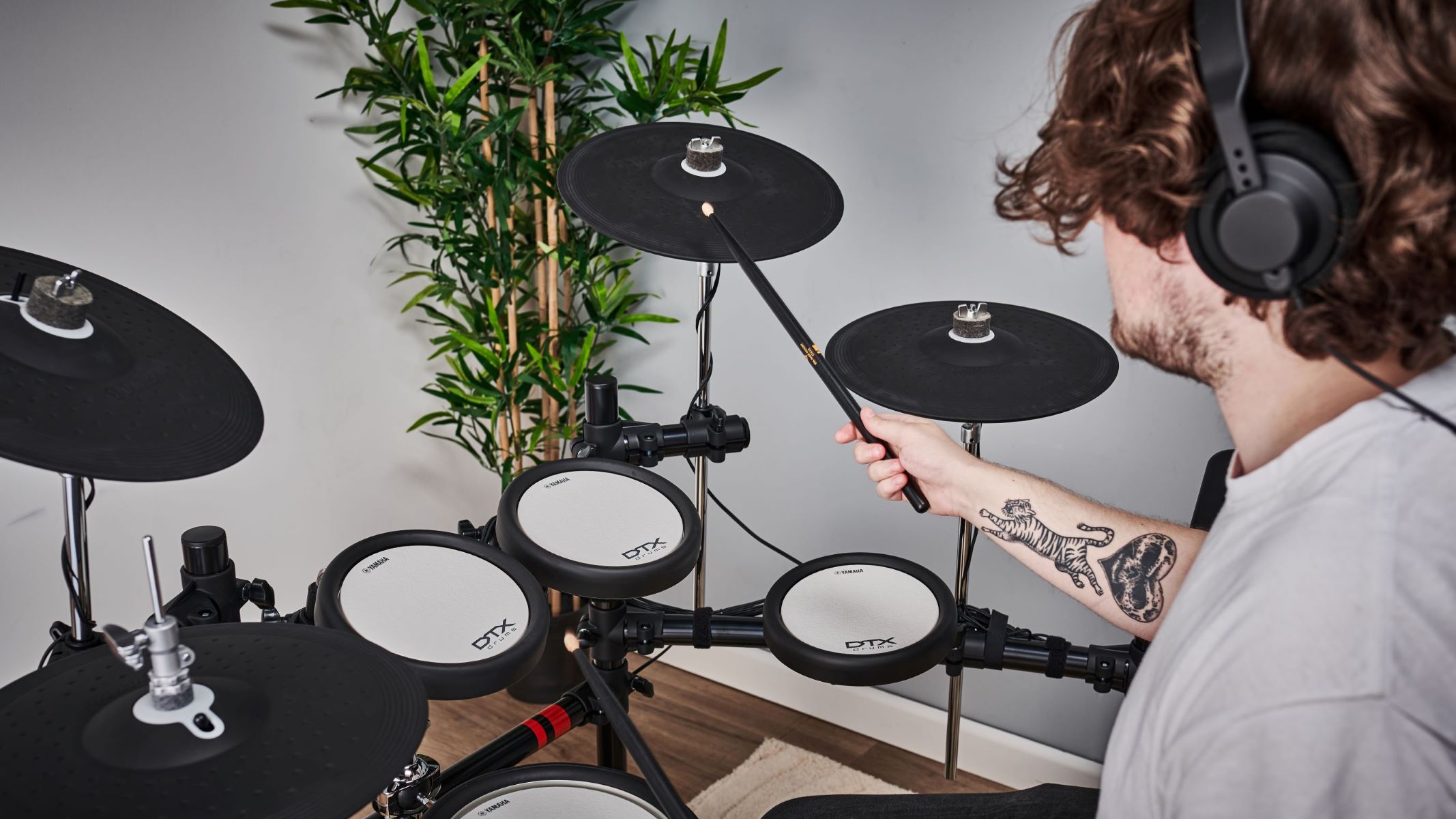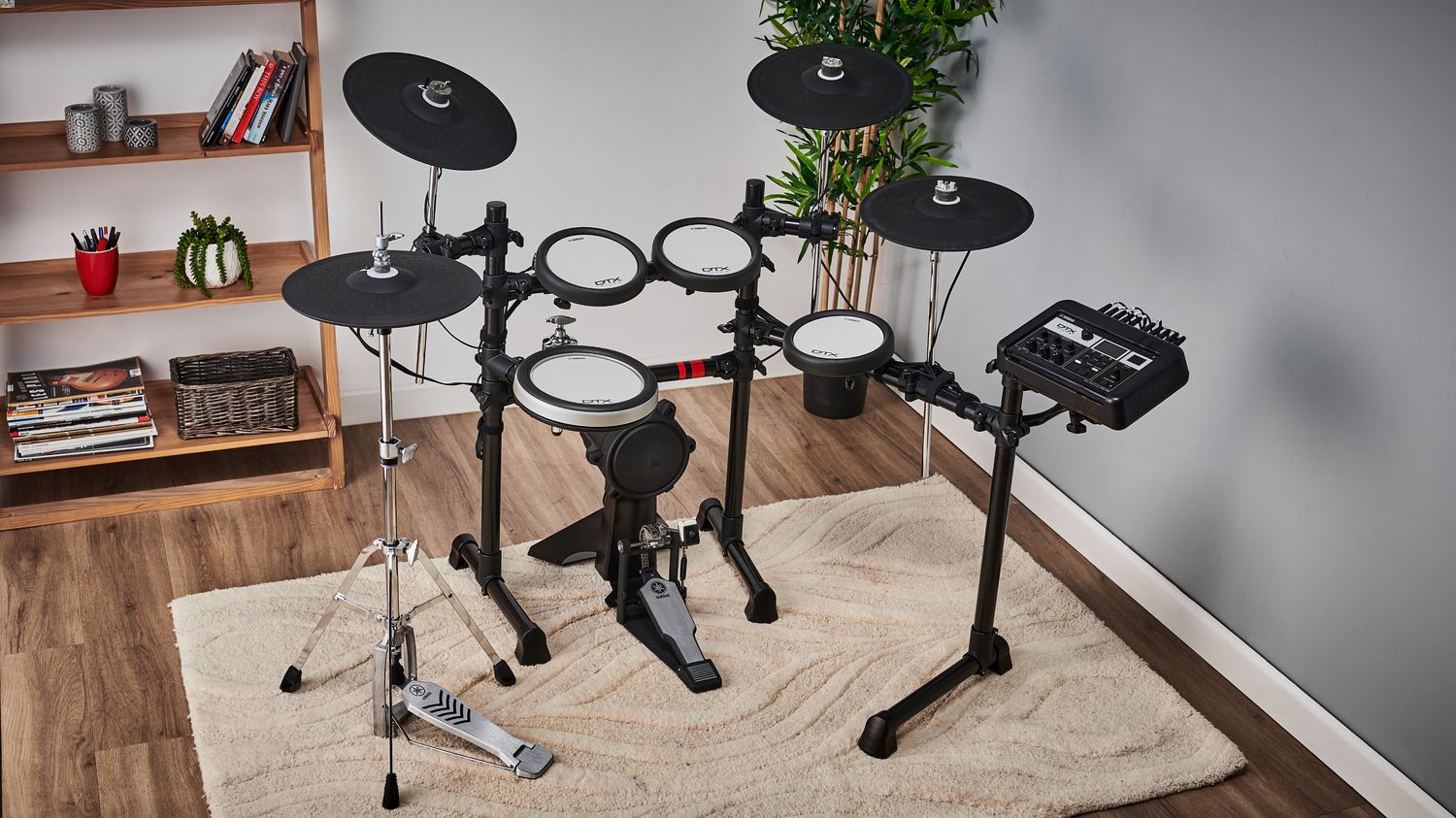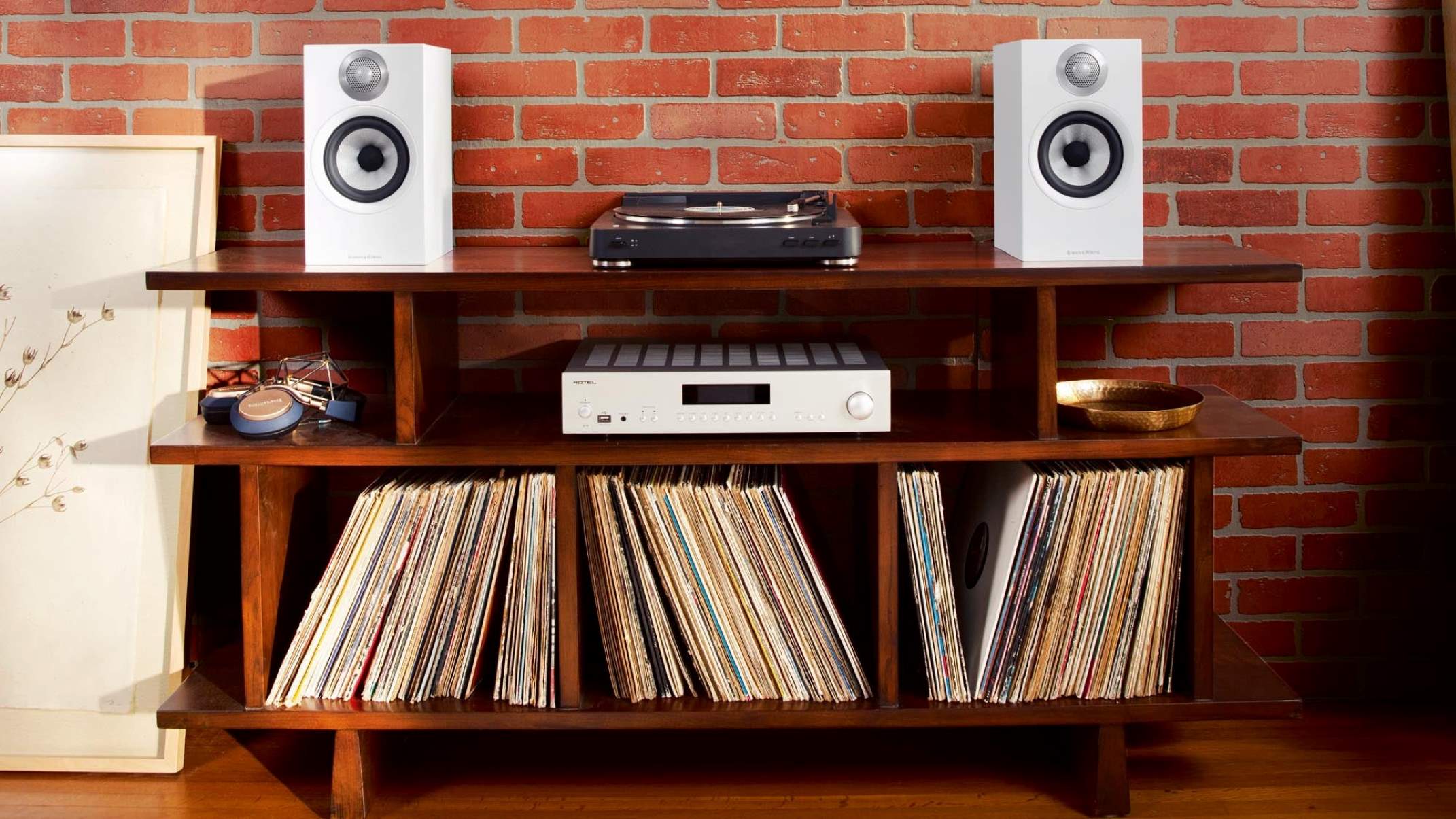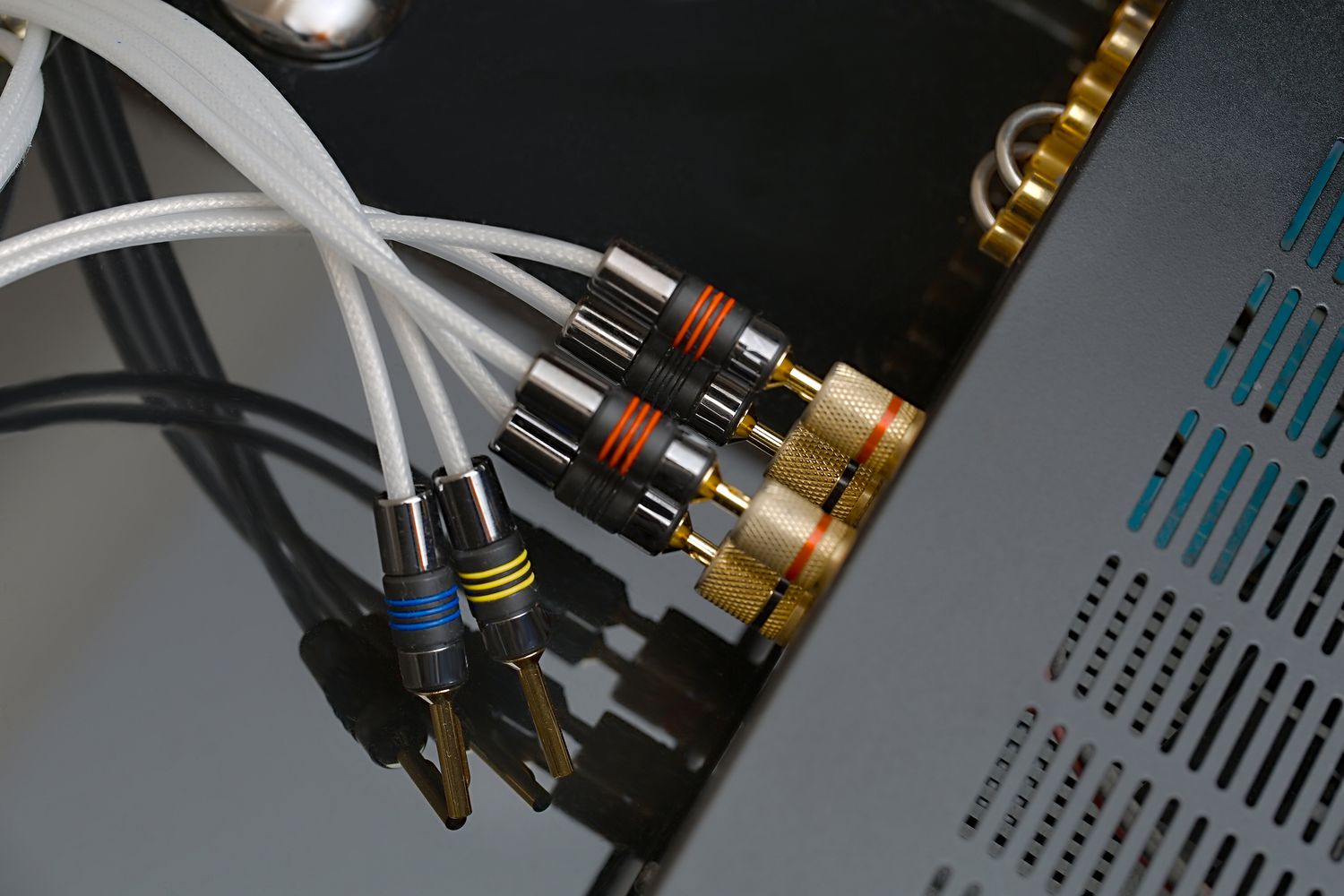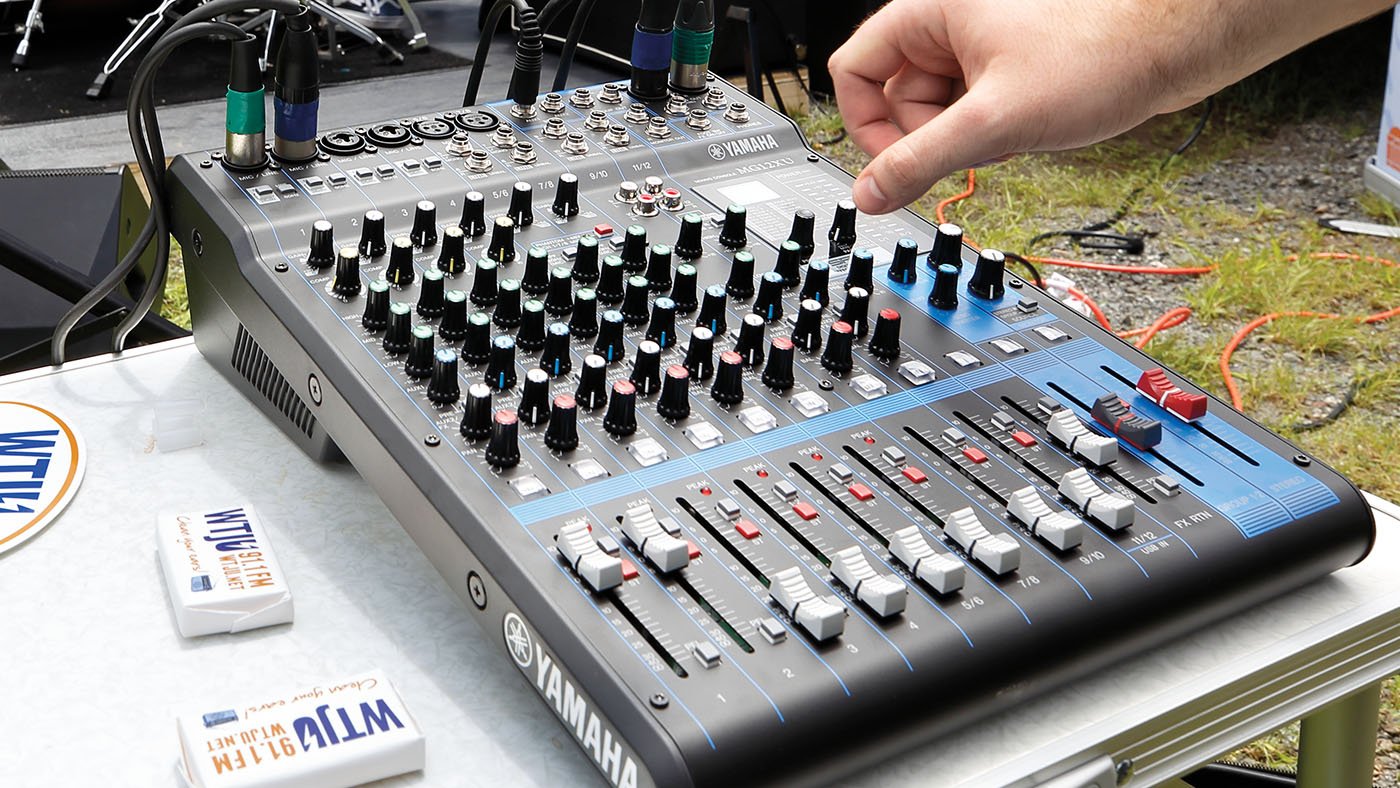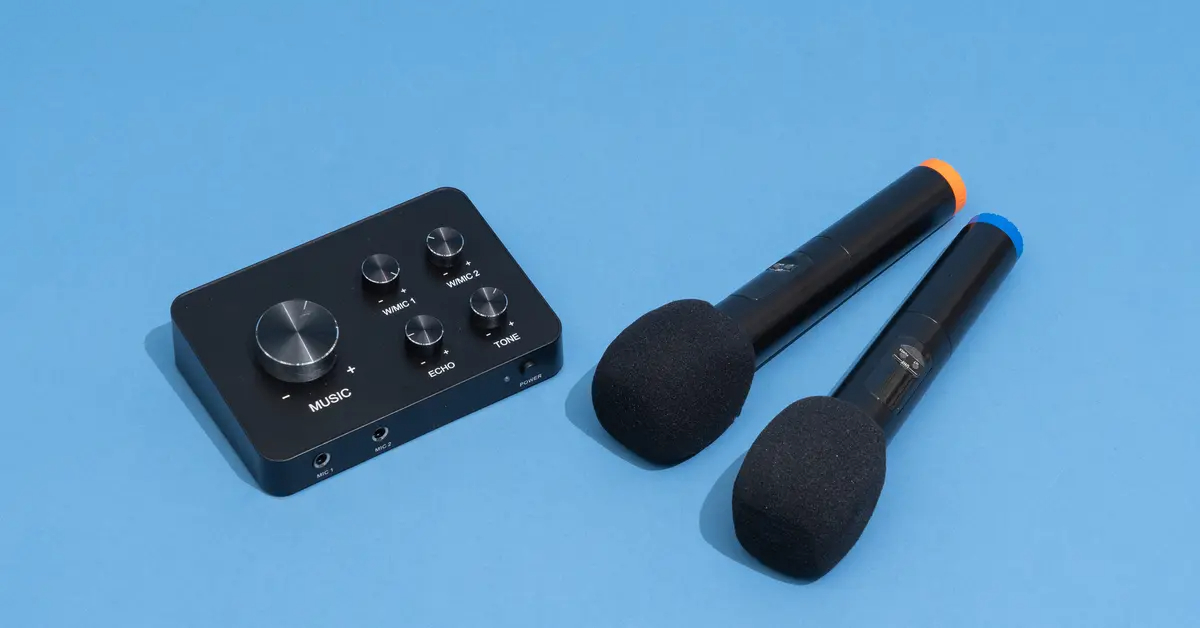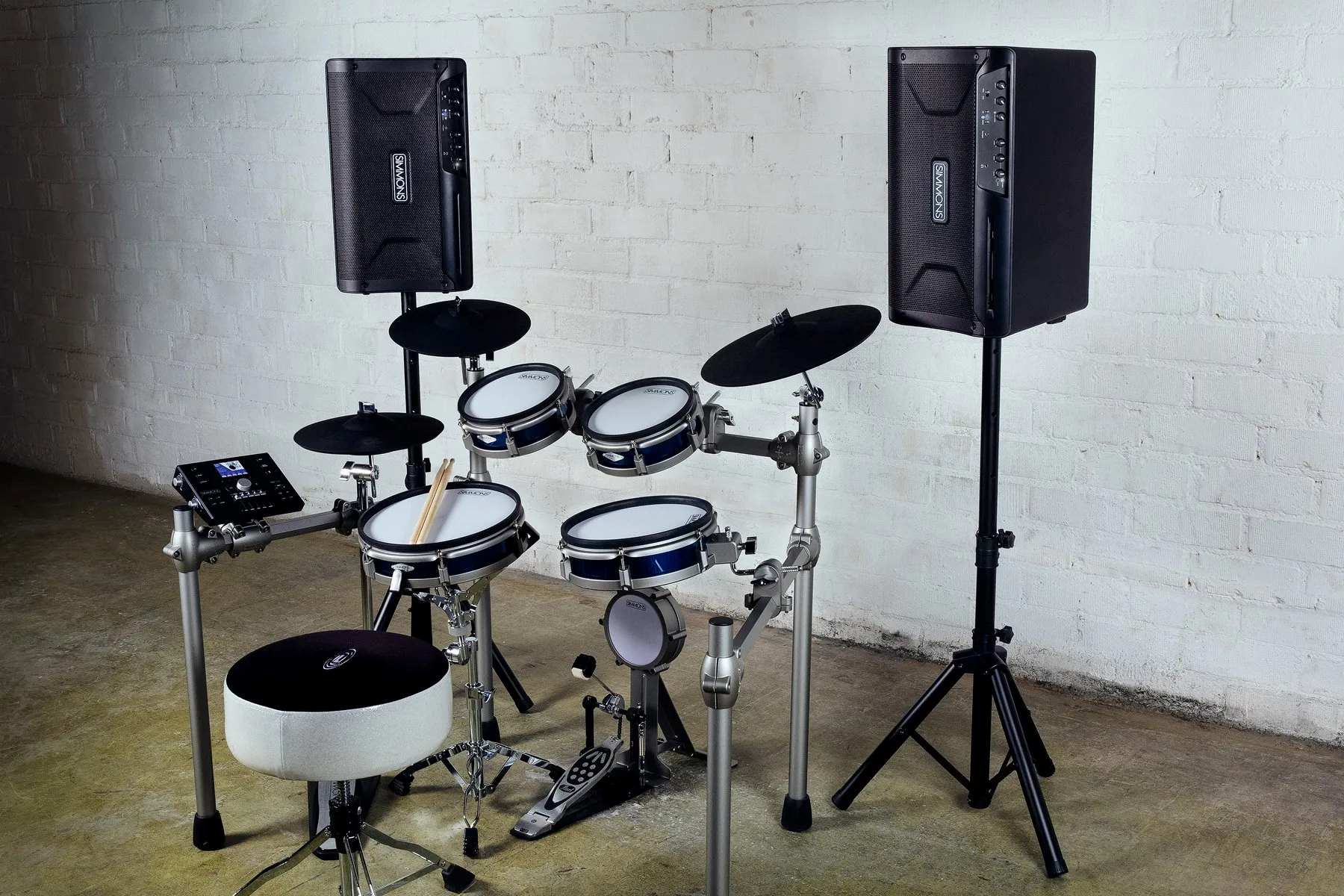Home>Instruments>Drums>How To Connect Electronic Drums To Speakers
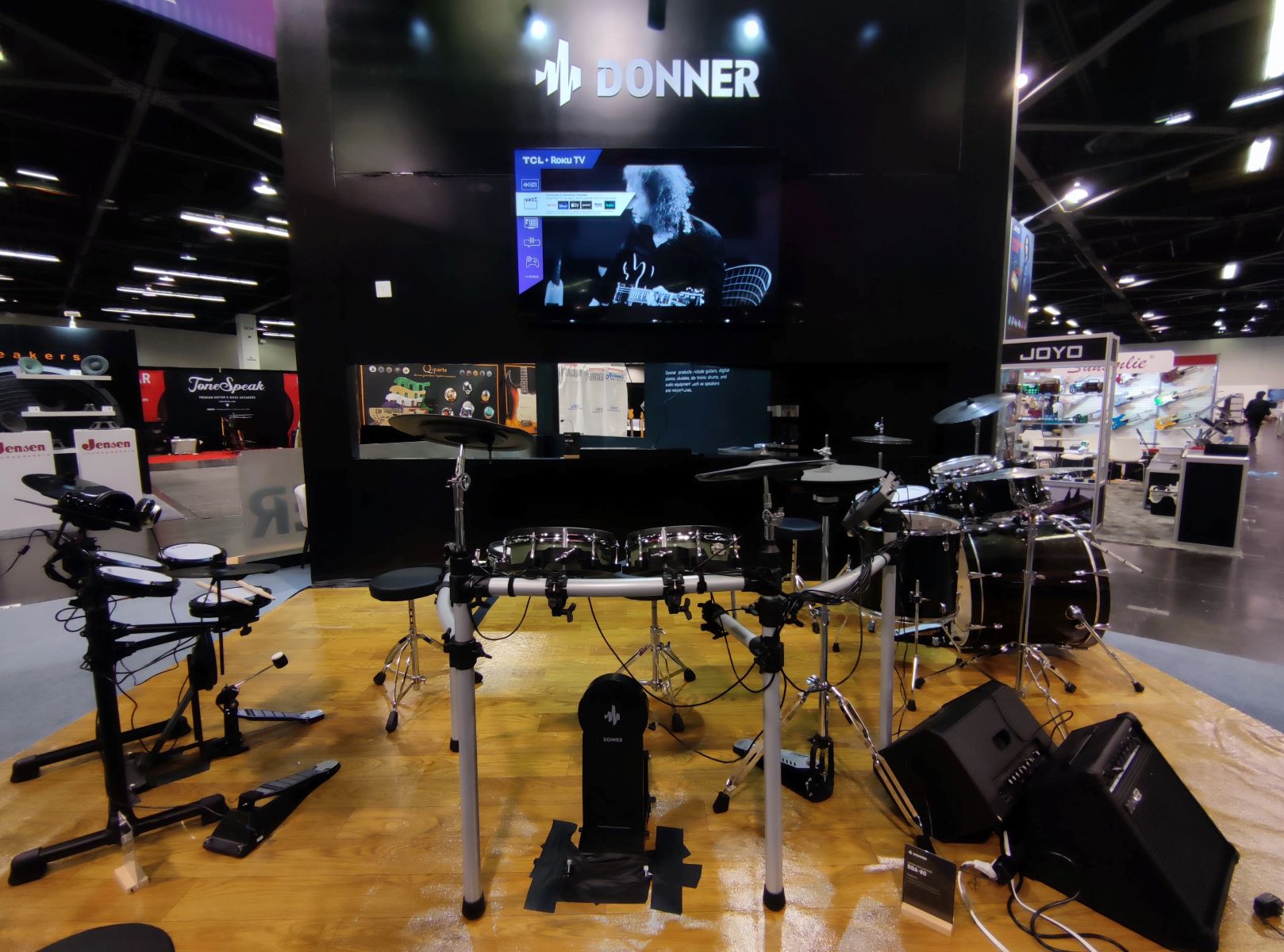

Drums
How To Connect Electronic Drums To Speakers
Published: February 8, 2024
Learn how to connect electronic drums to speakers with our step-by-step guide. Get the best sound for your drumming setup.
(Many of the links in this article redirect to a specific reviewed product. Your purchase of these products through affiliate links helps to generate commission for AudioLover.com, at no extra cost. Learn more)
Table of Contents
Introduction
Electronic drums have revolutionized the world of percussion, offering a versatile and dynamic way to create music. Whether you’re a professional drummer, a hobbyist, or a music producer, electronic drums provide an array of benefits, from customizable sound options to space-saving design. However, to fully experience the power and intricacy of electronic drums, it’s crucial to connect them to high-quality speakers that can faithfully reproduce the nuanced sounds they produce.
In this comprehensive guide, we will delve into the process of connecting electronic drums to speakers, ensuring that you can unleash the full potential of your electronic drum kit. We will explore the technical aspects of this connection, providing step-by-step instructions to help you achieve optimal audio output. Additionally, we’ll address common troubleshooting issues that may arise, equipping you with the knowledge to overcome potential challenges.
By the end of this guide, you will have a clear understanding of how to seamlessly integrate your electronic drums with speakers, enabling you to immerse yourself in the immersive and captivating world of electronic percussion. Whether you’re preparing for a live performance, recording a studio session, or simply jamming out in your practice space, the insights shared here will empower you to elevate your musical experience and share your rhythmic creativity with the world.
Understanding Electronic Drums
Electronic drums, also known as digital drums or e-drums, are electronic percussion instruments designed to replicate the feel and sound of traditional acoustic drums. They consist of drum pads, which are typically equipped with built-in sensors to detect strikes and transmit electronic signals, capturing the nuances of a drummer’s performance. These signals are then processed by a sound module, also referred to as a drum brain, which generates the corresponding sounds.
One of the key advantages of electronic drums lies in their versatility. Unlike acoustic drums, electronic drum kits offer a wide range of customizable sounds, allowing drummers to explore diverse genres and experiment with various drum kit configurations. From classic rock and jazz to electronic and experimental music, electronic drums can adapt to different styles with ease, making them a valuable tool for musicians across genres.
Another notable feature of electronic drums is their compact and space-efficient design. Traditional acoustic drum kits often require significant space for setup and storage, posing challenges for musicians with limited room. In contrast, electronic drum kits can be set up in smaller spaces, making them ideal for home studios, practice rooms, and live performances where space is at a premium.
Furthermore, electronic drums offer the advantage of integrated sound reinforcement. By connecting electronic drums to speakers or amplifiers, drummers can ensure that their performances are heard with clarity and impact. This seamless integration between the drum kit and the audio output system enables a more immersive and engaging experience for both the performer and the audience.
Understanding the fundamental components and capabilities of electronic drums is essential for harnessing their full potential. By grasping the inner workings of electronic drum technology, drummers can make informed decisions when it comes to connecting their electronic drums to speakers, optimizing the audio output for an exceptional sonic experience.
Connecting Electronic Drums to Speakers
Connecting electronic drums to speakers is a pivotal step in unleashing the full sonic potential of your electronic drum kit. Whether you’re practicing at home, performing live, or recording in a studio, establishing a reliable and high-quality connection between your electronic drums and speakers is essential for delivering a captivating and immersive sound experience.
The process of connecting electronic drums to speakers involves several key components and considerations. Here’s a step-by-step guide to help you navigate this crucial connection:
- Identify the Audio Outputs: Begin by identifying the audio outputs on your electronic drum module. Most electronic drum modules feature standard audio output jacks, such as 1/4-inch stereo or mono outputs, which allow you to connect the drum module to external audio devices, including speakers and amplifiers.
- Choose the Right Cables: Select the appropriate cables to connect the audio outputs of your electronic drum module to the input of your speakers. Depending on the available input options on your speakers, you may need 1/4-inch cables, XLR cables, or adapters to establish the connection.
- Positioning and Placement: Determine the optimal placement of your speakers in relation to your electronic drum kit. Consider factors such as sound dispersion, spatial coverage, and audience positioning if you’re setting up for a live performance. For home practice or studio recording, aim to position the speakers in a way that complements the acoustics of the room and provides an accurate representation of the drum sounds.
- Connect the Cables: With the appropriate cables in hand, connect the audio outputs of your electronic drum module to the input of your speakers. Ensure a secure and snug connection to prevent signal loss or interference during performance.
- Power On and Test: Once the connections are in place, power on your electronic drum module and speakers. Test the audio output by playing the drum pads and listening for the sound reproduction through the speakers. Adjust the volume levels and sound settings as needed to achieve the desired audio balance and clarity.
By following these steps, you can establish a robust and seamless connection between your electronic drums and speakers, setting the stage for an immersive and impactful sonic experience. Whether you’re honing your skills in a practice space, sharing your beats with a live audience, or capturing your performances in a recording environment, a reliable and well-executed connection between electronic drums and speakers is essential for delivering the full depth and richness of your drumming prowess.
Setting Up the Audio Interface
When connecting electronic drums to speakers, the audio interface plays a crucial role in facilitating the transmission of digital audio signals from the electronic drum module to the speakers. The audio interface serves as the intermediary device that converts the digital signals into analog audio, allowing for seamless playback through the connected speakers.
Here are the essential steps to set up the audio interface for optimal connectivity between electronic drums and speakers:
- Selecting an Audio Interface: Choose an audio interface that aligns with the specific requirements of your electronic drum kit and the intended audio output setup. Consider factors such as the number of audio inputs and outputs, compatibility with your drum module, and the overall audio quality offered by the interface.
- Connecting the Drum Module: Use appropriate audio cables to connect the audio outputs of your electronic drum module to the input ports on the audio interface. Ensure that the connections are secure and that the cables are of sufficient length to accommodate the spatial arrangement of your drum kit and speakers.
- Configuring Input Levels: Once the drum module is connected to the audio interface, adjust the input levels on the interface to optimize the signal strength and prevent distortion. Most audio interfaces feature input level controls or gain knobs that allow you to fine-tune the incoming audio signals from the drum module.
- Connecting to Speakers: From the output ports of the audio interface, connect the appropriate cables to the input of your speakers or amplification system. Ensure that the connections are secure and that the cables are compatible with the input options available on your speakers.
- Software Configuration: If your audio interface requires specific software drivers or configuration settings, install the necessary software on your computer or digital audio workstation (DAW). Follow the manufacturer’s instructions to ensure that the audio interface is recognized and configured correctly for seamless audio playback.
- Testing and Calibration: Power on the audio interface, drum module, and speakers, and test the audio output by playing the electronic drums. Listen for clarity, balance, and fidelity in the reproduced sounds. Make any necessary adjustments to the interface settings or speaker placement to achieve the desired audio performance.
By setting up the audio interface in alignment with these guidelines, you can establish a robust and efficient audio transmission pathway for your electronic drums, ensuring that the nuances of your drumming technique are faithfully reproduced through the connected speakers. The audio interface serves as a critical link in the chain of audio connectivity, enabling you to experience the full sonic potential of your electronic drum kit in various musical settings.
Adjusting the Sound Output
Once the electronic drums are connected to the speakers through the audio interface, it’s essential to fine-tune the sound output to achieve optimal audio quality and balance. Adjusting the sound output involves optimizing the settings on both the electronic drum module and the audio interface, as well as making adjustments to the speaker configuration to ensure an immersive and accurate sonic experience.
Here are the key steps to consider when adjusting the sound output of your electronic drums:
- Drum Module Settings: Access the sound settings on your electronic drum module to customize the individual drum sounds, adjust the overall volume levels, and fine-tune the equalization (EQ) settings. Many electronic drum modules offer a range of sound editing features, allowing you to tailor the characteristics of each drum pad and cymbal to suit your preferences and performance requirements.
- Audio Interface Controls: Utilize the controls and settings available on the audio interface to refine the audio output. This may include adjusting the input gain levels, applying signal processing effects, and optimizing the overall output volume. Pay attention to any built-in equalization or compression features on the interface to enhance the clarity and impact of the drum sounds.
- Speaker Placement and EQ: Consider the placement of the speakers in the performance or listening environment. Experiment with speaker positioning to achieve optimal sound dispersion and coverage. Additionally, if your speakers offer equalization controls or room correction features, utilize these functions to adapt the sound output to the acoustics of the space, ensuring a balanced and accurate representation of the electronic drum sounds.
- Listening Environment: Take into account the acoustic characteristics of the room where the electronic drums will be played. Adjust the sound output to accommodate the room’s acoustics, minimizing any potential resonance or sound reflections that may impact the overall listening experience. This may involve making subtle adjustments to the volume levels and tonal characteristics to achieve an optimal sonic environment.
- Performance Testing: Once the sound output adjustments have been made, conduct performance testing by playing the electronic drums and evaluating the audio reproduction through the speakers. Listen for clarity, tonal balance, and dynamic response to ensure that the sound output aligns with your artistic vision and performance requirements.
By meticulously adjusting the sound output of your electronic drums and speakers, you can elevate the sonic experience to a level that captures the nuances of your drumming technique and musical expression. Whether you’re aiming for pristine studio recordings, powerful live performances, or immersive practice sessions, the careful calibration of sound output settings ensures that your electronic drum kit delivers a captivating and authentic sonic experience.
Troubleshooting Common Issues
While connecting electronic drums to speakers can significantly enhance the sonic experience, it’s important to be prepared to address common issues that may arise during the setup and usage of this audio system. By understanding and troubleshooting these issues, you can ensure a seamless and uninterrupted performance with your electronic drum kit.
Here are some common issues and troubleshooting tips:
- Audio Distortion: If you encounter audio distortion or clipping when playing the electronic drums through the speakers, check the input gain levels on the audio interface. Lower the input gain if the signal is too hot, causing distortion. Additionally, review the sound settings on the drum module to ensure that individual pad volumes are balanced and not excessively high.
- Intermittent Connectivity: In cases where the audio signal intermittently cuts out or exhibits connectivity issues, inspect the cable connections between the drum module, audio interface, and speakers. Ensure that the cables are securely plugged in and that there are no damaged or faulty cables causing intermittent signal loss. Consider using high-quality, shielded cables to minimize interference.
- Unbalanced Sound: If the sound output from the speakers appears unbalanced, with certain frequencies overpowering others, review the equalization settings on the audio interface and the drum module. Adjust the EQ settings to achieve a more balanced tonal representation, ensuring that the low, mid, and high frequencies are appropriately articulated in the audio output.
- Latency and Delay: Address any perceptible latency or delay between striking the electronic drum pads and hearing the corresponding sound from the speakers. Adjust the buffer settings on the audio interface or within the audio software to minimize latency. Additionally, ensure that the audio interface drivers and firmware are up to date to optimize performance and minimize latency issues.
- Room Acoustics and Feedback: When using electronic drums in live performance settings, be mindful of room acoustics and potential feedback issues. Position the speakers strategically to minimize feedback, and consider utilizing feedback suppression tools if necessary. Adjust the speaker placement and orientation to optimize sound dispersion and minimize acoustic challenges in the performance space.
By proactively troubleshooting these common issues, you can maintain a reliable and high-quality connection between your electronic drums and speakers, ensuring that your performances are characterized by exceptional audio fidelity and a seamless sonic experience. Additionally, familiarizing yourself with troubleshooting techniques equips you with the knowledge to swiftly address any unexpected challenges that may arise, allowing you to focus on delivering engaging and impactful drumming performances.
Conclusion
Connecting electronic drums to speakers is a transformative process that unlocks the full potential of electronic percussion, enabling drummers to immerse themselves in a world of dynamic sound and creative expression. By understanding the technical intricacies of this connection and embracing the nuances of sound optimization, drummers can elevate their performances and sonic experiences to new heights.
Throughout this guide, we have explored the fundamental steps involved in connecting electronic drums to speakers, from identifying audio outputs and selecting the right cables to fine-tuning sound output settings and troubleshooting common issues. By following these guidelines, drummers can establish a robust and reliable connection between their electronic drum kits and speakers, ensuring that the captivating nuances of their performances are faithfully reproduced and shared with audiences and listeners.
Furthermore, the integration of electronic drums with high-quality speakers opens up a world of possibilities, from studio recording sessions and live performances to immersive practice environments. The versatility and customizability of electronic drum sounds, coupled with the seamless audio transmission to speakers, empower drummers to explore diverse musical genres and unleash their rhythmic creativity with precision and impact.
As technology continues to advance, the realm of electronic drums and audio connectivity evolves, offering new opportunities for drummers to shape their sonic identities and push the boundaries of musical expression. By embracing the art and science of connecting electronic drums to speakers, drummers can embark on a sonic journey that transcends traditional boundaries, amplifying their passion for percussion and captivating audiences with immersive and captivating performances.
Ultimately, the connection between electronic drums and speakers represents a harmonious fusion of innovation, artistry, and technical expertise, creating a symphony of sound that resonates with the spirit of musical exploration and creativity. As drummers continue to harness the power of electronic percussion and audio connectivity, the rhythmic landscape expands, inviting new possibilities and sonic adventures that enrich the musical tapestry with each beat and flourish.

